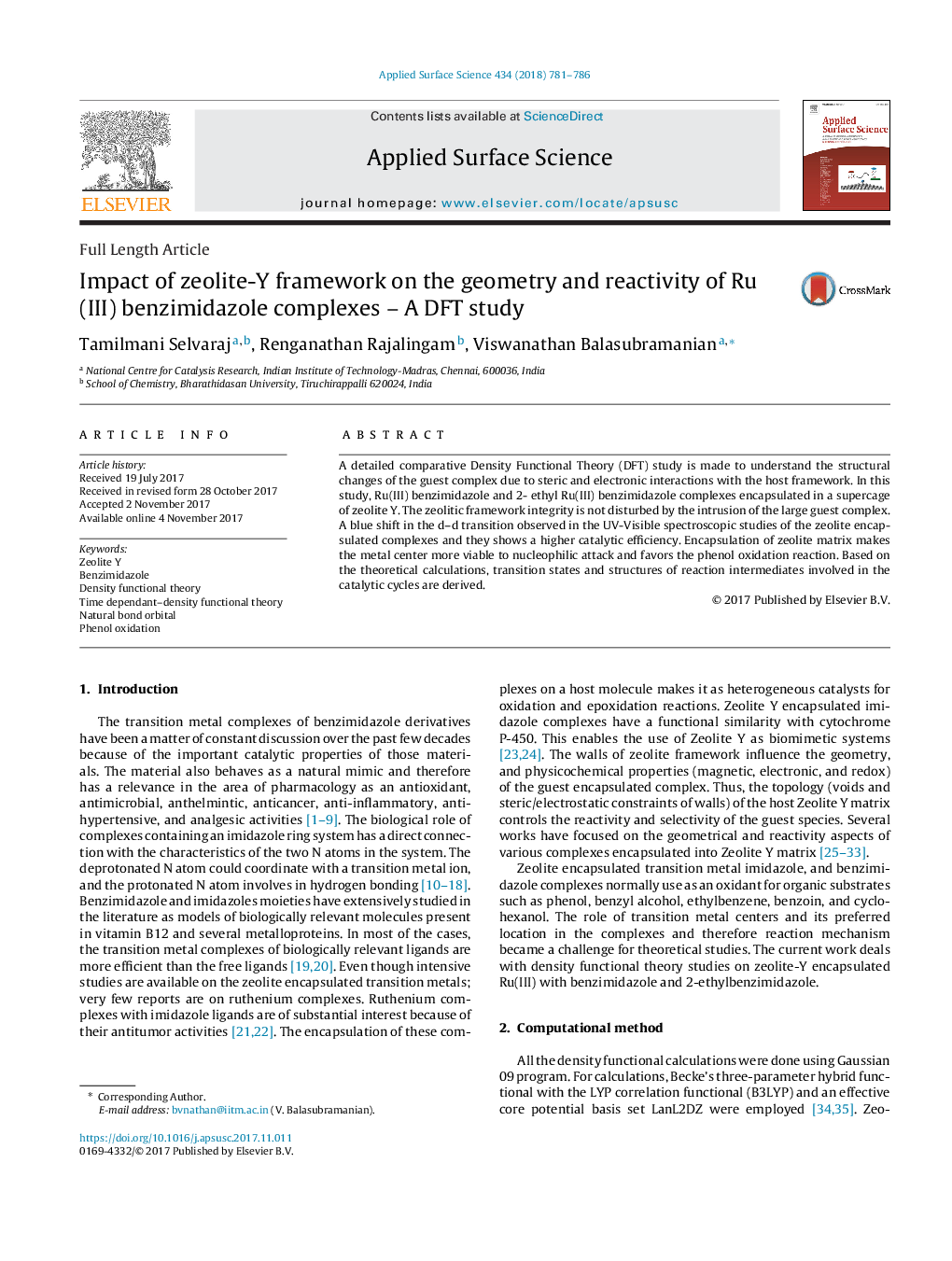| Article ID | Journal | Published Year | Pages | File Type |
|---|---|---|---|---|
| 7836487 | Applied Surface Science | 2018 | 6 Pages |
Abstract
A detailed comparative Density Functional Theory (DFT) study is made to understand the structural changes of the guest complex due to steric and electronic interactions with the host framework. In this study, Ru(III) benzimidazole and 2- ethyl Ru(III) benzimidazole complexes encapsulated in a supercage of zeolite Y. The zeolitic framework integrity is not disturbed by the intrusion of the large guest complex. A blue shift in the d-d transition observed in the UV-Visible spectroscopic studies of the zeolite encapsulated complexes and they shows a higher catalytic efficiency. Encapsulation of zeolite matrix makes the metal center more viable to nucleophilic attack and favors the phenol oxidation reaction. Based on the theoretical calculations, transition states and structures of reaction intermediates involved in the catalytic cycles are derived.
Related Topics
Physical Sciences and Engineering
Chemistry
Physical and Theoretical Chemistry
Authors
Tamilmani Selvaraj, Renganathan Rajalingam, Viswanathan Balasubramanian,
